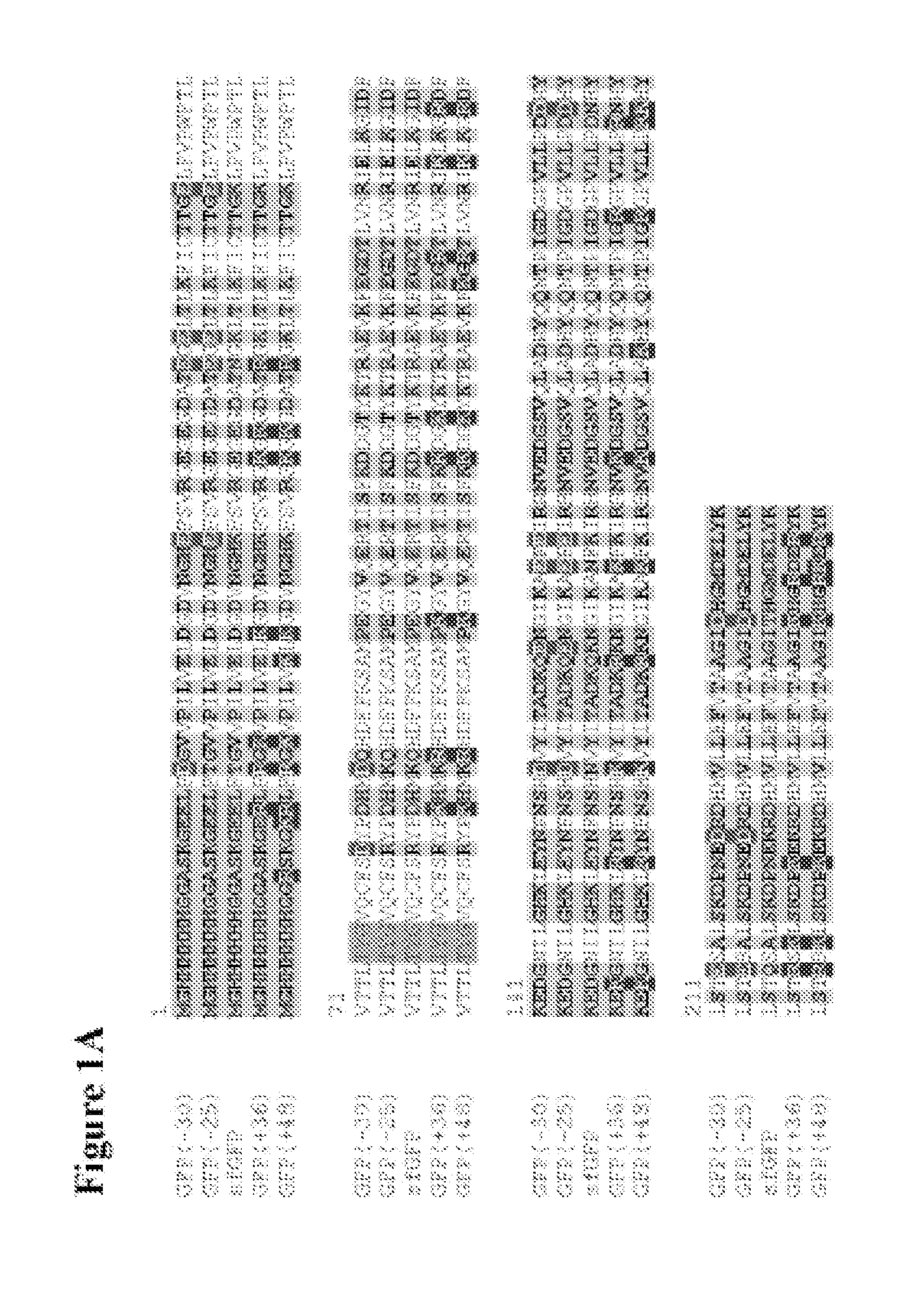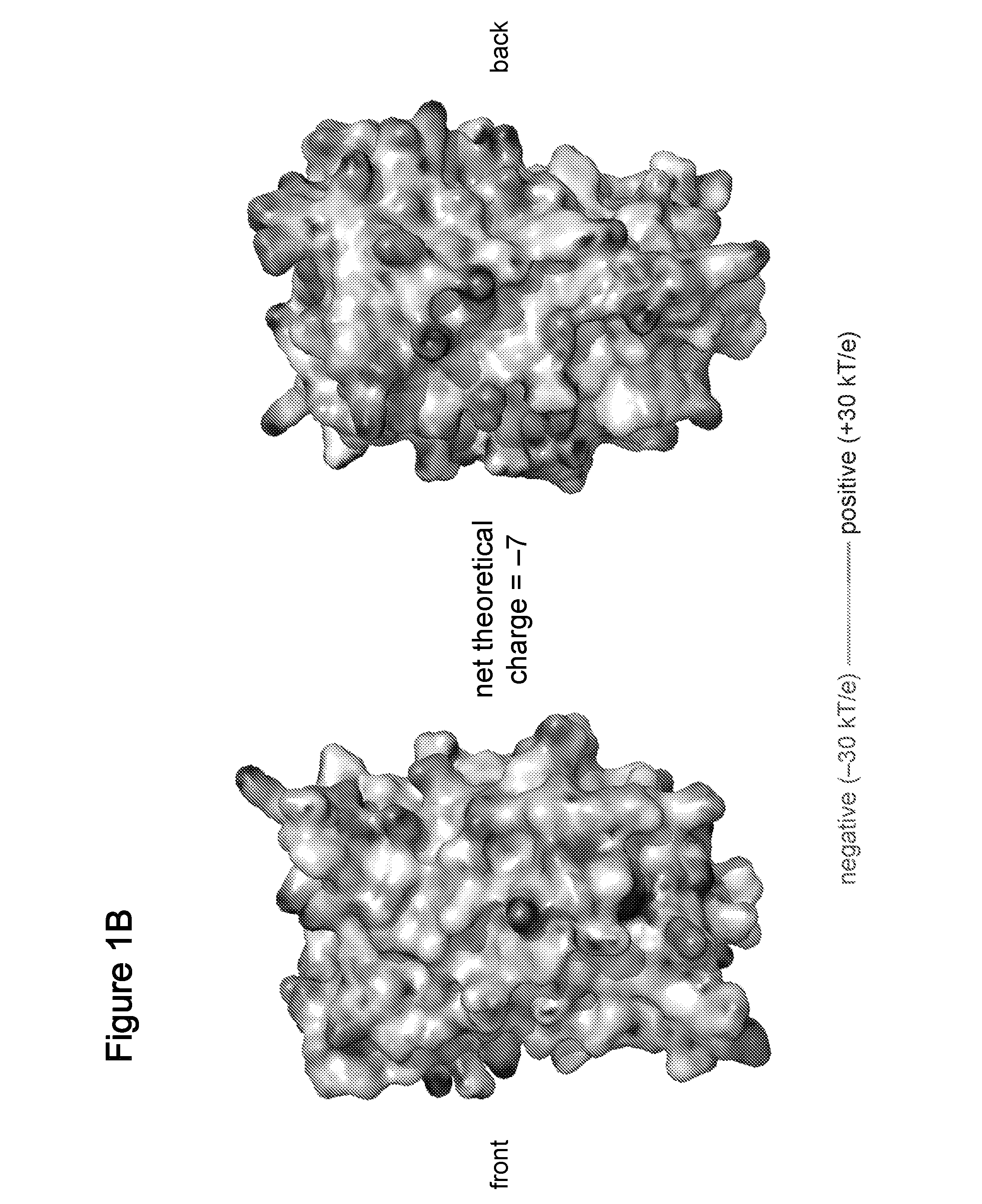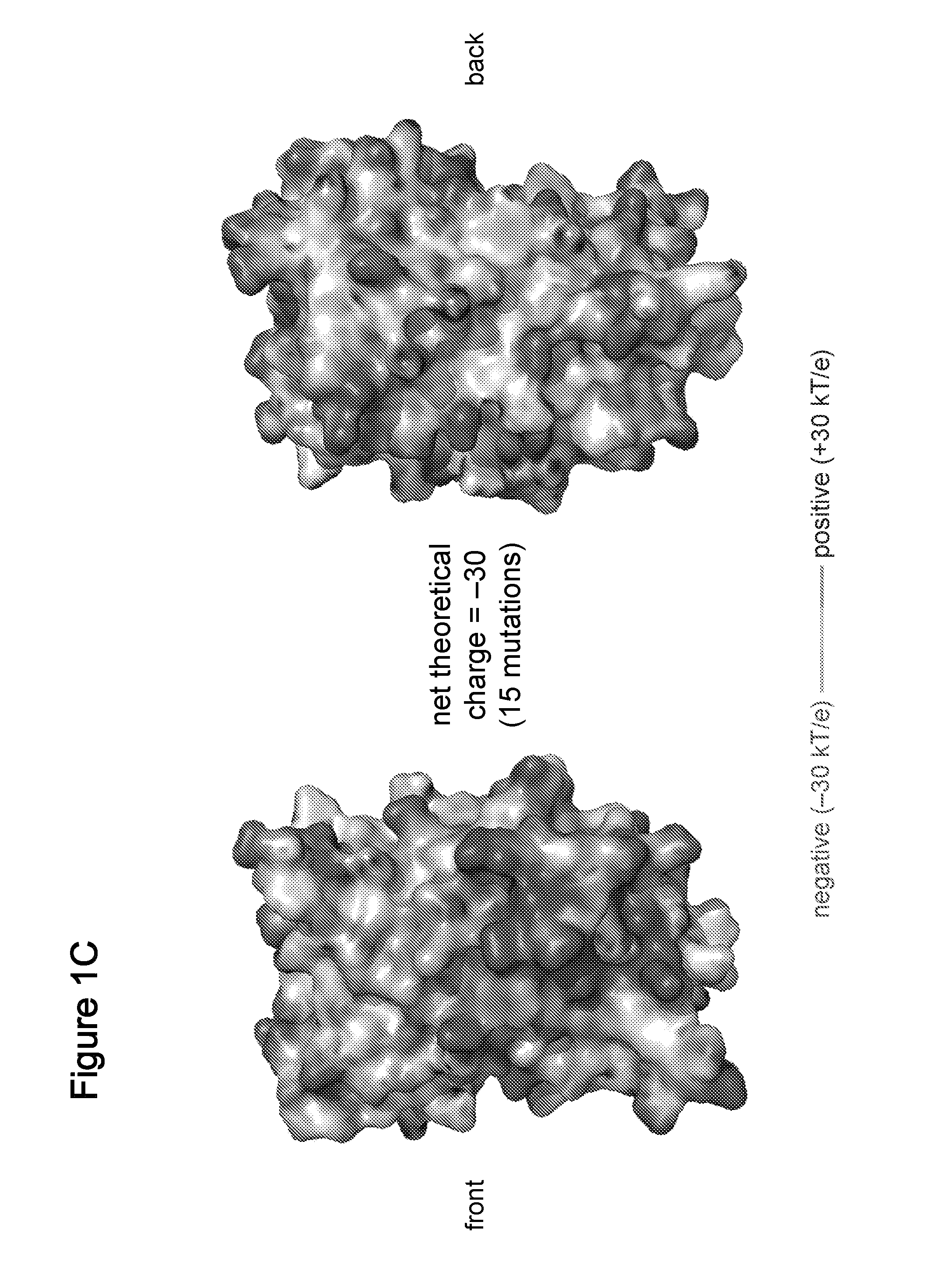Supercharged proteins for cell penetration
a technology of supercharged proteins and cell penetration, applied in the direction of peptides, drug compositions, peptides, etc., can solve the problems of ineffective nucleic acid delivery to cells, unpredictable delivery of nucleic acids such as sirnas to cells, and failure to reach or penetrate target cells to achieve the desired effect, etc., to enhance cell penetration of associated agents, enhance cell penetration, and reduce or abolish biological activities
- Summary
- Abstract
- Description
- Claims
- Application Information
AI Technical Summary
Benefits of technology
Problems solved by technology
Method used
Image
Examples
example 1
Supercharging Proteins can Impart Extraordinary Resilience
Materials and Methods
Design Procedure and Supercharged Protein Sequences
[0268]Solvent-exposed residues (shown in grey below) were identified from published structural data (Weber et al., 1989, Science, 243:85; Dirr et al., 1994, J. Mol. Biol., 243:72; Pedelacq et al., 2006, Nat. Biotechnol., 24:79; each of which is incorporated herein by reference) as those having AvNAPSA <150, where AvNAPSA is average neighbor atoms (within 10 Å) per sidechain atom. Charged or highly polar solvent-exposed residues (DERKNQ) were mutated either to Asp or Glu, for negative-supercharging; or to Lys or Arg, for positive-supercharging. Additional surface-exposed positions to mutate in green fluorescent protein (GFP) variants were chosen on the basis of sequence variability at these positions among GFP homologues.
Protein Expression and Purification
[0269]Synthetic genes optimized for E. coli codon usage were purchased from DNA 2.0, cloned into a pET...
example 2
Supercharged Proteins can be Used to Efficiently Deliver Nucleic Acids to Cells
[0283]FIG. 5 demonstrates that supercharged GFPs associate non-specifically and reversibly with oppositely charged macromolecules (“protein Velcro”). Such interactions can result in the formation of precipitates. Unlike aggregates of denatured proteins, these precipitates contain folded, fluorescent GFP and dissolve in 1 M salt. Shown here are: +36 GFP alone; +36 GFP mixed with −30 GFP; +36 GFP mixed with tRNA; +36 GFP mixed with tRNA in 1 M NaCl; superfolder GFP (“sf GFP”; −7 GFP); and sfGFP mixed with −30 GFP.
[0284]FIG. 6 demonstrates that superpositively charged GFP binds siRNA. The binding stoichiometry between +36 GFP and siRNA was determined by mixing various ratios of the two components (30 minutes at 25° C.) and running the mixture on a 3% agarose gel (Kumar et al., 2007, Nature, 449:39; incorporated herein by reference). Ratios of +36 GFP:siRNA tested were 0:1, 1:1, 1:2, 1:3, 1:4, 1:5, and 1:10. ...
example 3
Mammalian Cell Penetration, siRNA Transfection, and DNA Transfection by Supercharged Green Fluorescent Proteins
[0296]We recently described resurfacing proteins without abolishing their structure or function through the extensive mutagenesis of non-conserved, solvent-exposed residues (Lawrence M S, Phillips K J, Liu D R (2007) Supercharging proteins can impart unusual resilience. J. Am. Chem. Soc. 129:10110-10112; International PCT patent application, PCT / US07 / 70254, filed Jun. 1, 2007, published as WO 2007 / 143574 on Dec. 13, 2007; U.S. provisional patent applications, U.S. Ser. No. 60 / 810,364, filed Jun. 2, 2006, and U.S. Ser. No. 60 / 836,607, filed Aug. 9, 2006; each of which is incorporated herein by reference). When the replacement residues are all positively or all negatively charged, the resulting “supercharged” proteins can retain their activity while gaining unusual properties such as robust resistance to aggregation and the ability to bind oppositely charged macromolecules. F...
PUM
| Property | Measurement | Unit |
|---|---|---|
| charge | aaaaa | aaaaa |
| physiological pH | aaaaa | aaaaa |
| pH | aaaaa | aaaaa |
Abstract
Description
Claims
Application Information
 Login to View More
Login to View More - R&D
- Intellectual Property
- Life Sciences
- Materials
- Tech Scout
- Unparalleled Data Quality
- Higher Quality Content
- 60% Fewer Hallucinations
Browse by: Latest US Patents, China's latest patents, Technical Efficacy Thesaurus, Application Domain, Technology Topic, Popular Technical Reports.
© 2025 PatSnap. All rights reserved.Legal|Privacy policy|Modern Slavery Act Transparency Statement|Sitemap|About US| Contact US: help@patsnap.com



